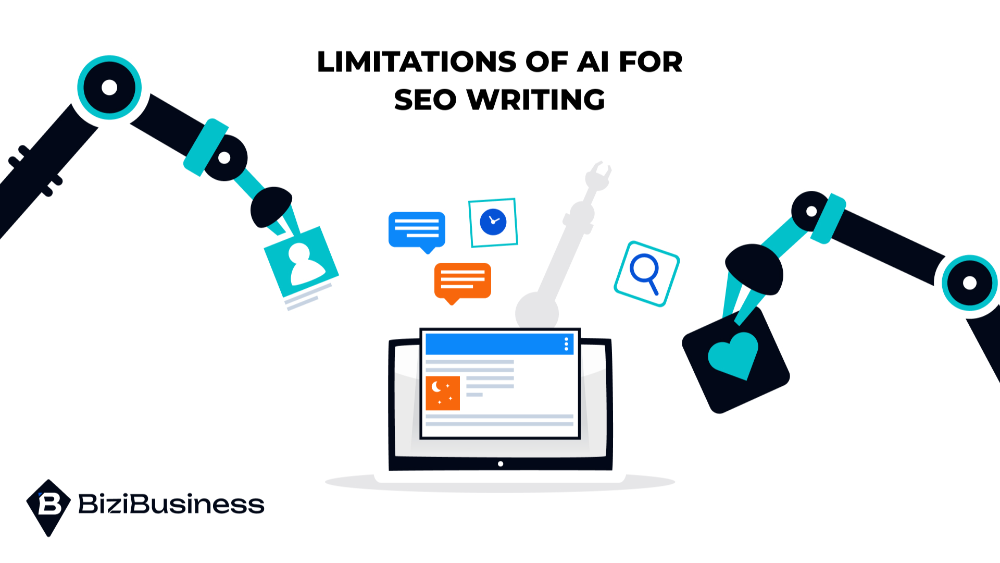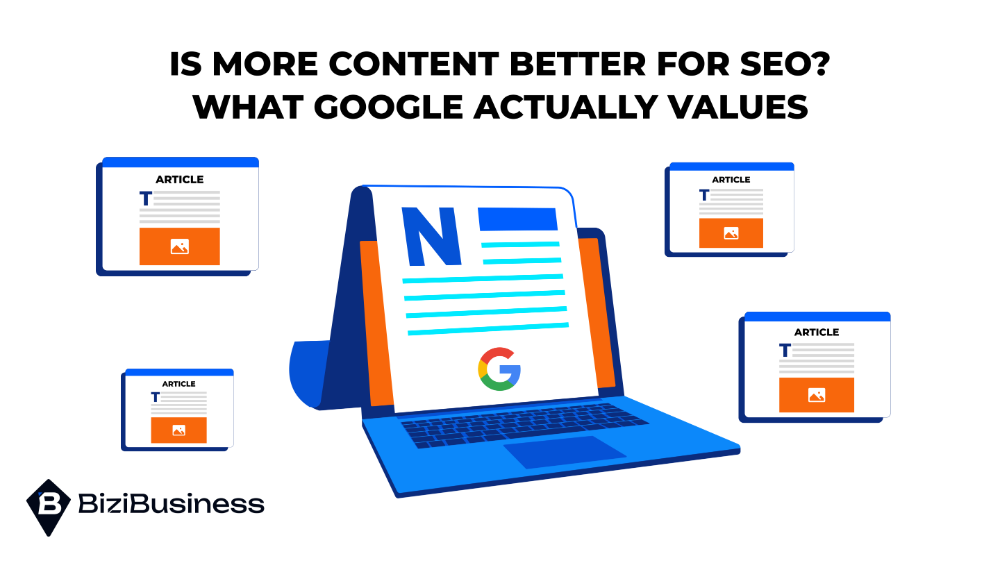Contents
Write smarter, not harder. Learn how to create SEO content with ChatGPT and boost your business’s visibility and performance.
Curious about how to write SEO content with ChatGPT without hurting your rankings? You’re not alone. AI tools like ChatGPT are reshaping content creation — but they work best as collaborators, not replacements.
Used strategically, ChatGPT can help you scale high-quality content fast. But without the right prompts, structure, and SEO know-how, your content risks sounding generic — and falling flat with both readers and Google.
In this guide, you’ll learn how to blend AI efficiency with human insight, avoid common pitfalls, and create SEO content that’s optimized, readable, and ready to rank.
Can ChatGPT Write SEO Content?
Yes — but only with the right human guidance.
ChatGPT is a powerful tool for content creation, but it’s not a plug-and-play solution for SEO dominance. It’s great at generating structure, maintaining flow, and producing grammatically clean content. What it lacks, however, is strategic nuance — the kind that understands your audience’s pain points, aligns with funnel stages, or reflects shifting SEO trends.
So, can ChatGPT write SEO content? Technically, yes. But the content needs human oversight to ensure it’s accurate, on-brand, and optimized for real-world search behavior.
Here’s where ChatGPT excels:
- Blog post first drafts: Speed up production with well-structured, readable content
- Meta descriptions and title tags: Generate variations quickly and A/B test them
- Content outlines: Create frameworks based on prompts, keywords, and tone
- Repurposing: Turn blog posts into scripts, emails, or social content
Where it struggles:
- Prioritizing intent behind a keyword
- Adapting to brand voice without a strong prompt
- Understanding ranking competition or technical SEO factors
To truly succeed with ChatGPT, you need to pair its strengths with your strategic brain. Think of it as your co-writer — not your content strategist.
SEO Content Planning Before You Prompt

Before you open ChatGPT, pause — great SEO content starts before the first word is written.
To get results, you need to clarify your goals, understand keywords and search intent, and define what you want your content to do. Are you driving leads? Educating? Ranking for a specific query? ChatGPT can’t answer that for you — but you can guide it with the right prep.
Start with tools like Ahrefs, SEMrush, or Google Trends to identify relevant keywords, assess competition, and explore what users actually care about. Look for patterns in phrasing, search volume, and related questions.
Once you’ve got your data, build a simple SEO content brief: include your target keyword, page goal, audience segment, tone, format, and desired CTA. You can draft this manually or use ChatGPT to help generate one — as long as you feed it the right input.
Worried about rankings? Many ask, does AI content affect SEO or does AI-generated content affect SEO negatively? Google’s stance is clear: what matters is quality. If your content is helpful, relevant, and original — even if AI-assisted — it can rank.
Bottom line: AI works best when your strategy leads and your prompt follows.
Writing SEO Content with ChatGPT: Step-by-Step

Understanding how to write SEO content with ChatGPT is less about relying on AI to do it all, and more about knowing how to guide the tool strategically from start to finish. When paired with a thoughtful process, ChatGPT becomes an incredibly efficient writing assistant — but you are still the strategist, editor, and quality control.
Here’s how to approach it step by step:
Step 1: Craft the Right Prompt
Everything starts with the prompt. The more context you provide, the better the output.
Include:
- A clear topic and working title
- Your target audience and the content’s goal (e.g., educate, convert, rank)
- Your desired tone of voice (e.g., friendly, expert, persuasive)
- One primary keyword and 1–2 related keywords
Example:
Write a 1,200-word blog post titled ‘How to Improve Dental SEO in 2025’ for private dental practice owners. Use a confident, informative tone. Keywords: ‘dental local SEO,’ ‘Google Business Profile optimization.’
Step 2: Generate and Review an Outline
Ask ChatGPT to first generate an outline. This helps you:
- Define the flow of the content
- Identify gaps or off-topic sections
- Ensure headings reflect real user search intent
Edit the outline as needed before writing begins.
Step 3: Write the Content in Sections
Don’t prompt ChatGPT to write the full article all at once. Instead:
- Start with the introduction, then move section by section
- Reference your edited outline in each prompt
- Adjust prompts as needed to maintain tone and depth
Always fact-check statistics or claims and refine the language to better reflect your brand’s style.
Step 4: Manually Add SEO Elements
Even when ChatGPT produces a solid draft, it won’t nail technical SEO elements. You need to manually:
- Write and insert meta titles and descriptions
- Add internal links to related blog posts or service pages
- Insert alt text for any images used
- Use SEO tools like SurferSEO, Clearscope, or Yoast to check keyword optimization, readability, and semantic relevance
Optimizing AI Content for SEO
Once you’ve drafted your article with ChatGPT, your job isn’t done — it’s time to optimize. If you want to truly master how to write SEO content with ChatGPT, you need to bridge the gap between good writing and great ranking.
Start by ensuring your primary keyword is placed in all the right spots:
- In the H1 (your main headline)
- Within the first 100 words of the introduction
- In at least one or two H2 subheadings
- Once in the closing paragraph
Next, work in semantic variations and related subkeywords — naturally. These could include phrasing from Google’s “People Also Ask” section, common search questions, or related terms found in tools like Ahrefs, SEMrush, or SurferSEO.
Watch out for keyword stuffing. Repeating the same phrase too often — especially in an unnatural way — won’t boost rankings; it’ll hurt readability and can even trigger Google penalties. ChatGPT can occasionally overuse phrasing if not guided properly, so always review and edit your content with this in mind.
Finally, cut out generic fluff. Phrases like “In today’s fast-paced digital world…” or “Content is king…” add no value. Replace them with specific, actionable insights or real examples.
Great SEO content isn’t just about keywords — it’s about clarity, relevance, and value. AI can help you write faster, but only you can ensure your content is worth ranking.
Limitations of AI for SEO Writing

While ChatGPT is powerful, it’s not a silver bullet — and knowing its limitations is just as important as learning how to write SEO content with it.
First, AI lacks firsthand experience. It doesn’t know what it’s like to run a business, manage a dental practice, or speak directly to a niche audience. That means content can feel generic or surface-level if not carefully guided.
Second, it can’t verify data. AI pulls from patterns in its training data, not real-time facts. You’ll need to validate statistics, quotes, and sources manually to avoid spreading misinformation.
Third, AI often struggles with tone and intent. If your content needs to sound like a subject matter expert, match a brand’s personality, or align with a specific funnel stage — AI needs a lot of help to get there.
And let’s not forget Google’s Helpful Content Update, which emphasizes human-first content that demonstrates real expertise and value. Relying solely on AI puts you at risk of falling short of that standard.
Human Editing is Non-Negotiable

If you’re serious about how to write SEO content with ChatGPT, here’s the most important rule: never publish without editing.
Even when AI generates clean, readable drafts, they’re still missing the one thing Google — and your readers — truly value: human perspective. AI lacks industry nuance, emotional intelligence, and the ability to tell real stories. Without editing, your content risks sounding generic, repetitive, or worse — incorrect.
That’s why human editing is non-negotiable.
Use tools like Grammarly or Hemingway Editor to polish grammar and readability. Use Originality.ai to scan for plagiarism or AI overuse. Then go deeper: revise structure, refine tone, and make the content yours. Inject real-world examples, expert opinions, or personal insights that give your piece originality and authority.
Formatting also matters. Break up walls of text, add bullet points, clarify headings, and ensure every section leads the reader somewhere useful.
AI can get you 70% of the way. But that final 30% — the polish, perspective, and precision — is where trust is built and rankings are earned.
Final Thoughts
If you’ve been wondering how to write SEO content with ChatGPT, here’s the bottom line: AI is an incredibly powerful tool — but it’s not a strategy. It can help you write faster, brainstorm smarter, and produce more. But the planning, optimization, and quality still depend on you.
The best way to get started? Test it. Choose one piece of content. Use the steps above to prompt, refine, optimize, and publish. Then track performance — clicks, engagement, rankings. Let the data show you what works and what needs tweaking.
Above all, use ChatGPT with intent. Every prompt should be backed by a real goal and SEO strategy. And if you’d rather skip the trial and error, we’ve got you.
Want SEO content that performs? Let’s build it together. At BiziBusiness, our SEO service blends human creativity with AI efficiency to deliver content that actually ranks, converts, and grows your business.




